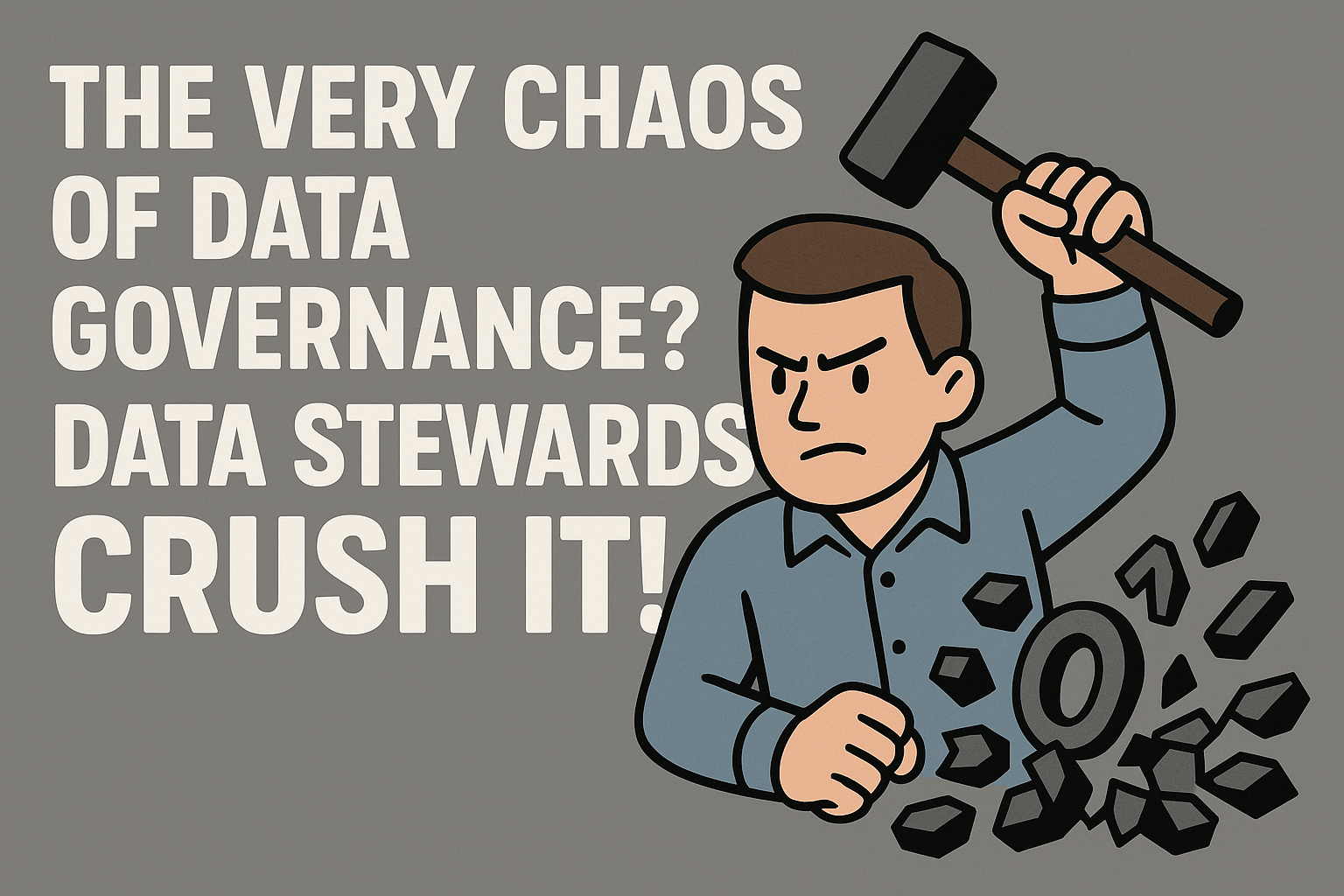How to Apply This Framework: A Practical Example
By analyzing the issues within an organization, we can see that problems exist across multiple areas of data governance. The 10 governance pillars serve as a guiding framework—a compass that helps organizations identify and resolve data challenges effectively.
1. Data Policies & Standards: Establish the Rules
- Related Issues:
- Lack of clear data policies, leading to inconsistencies in data quality.
- Misalignment between systems, causing incorrect sales data.
- Discrepancies in data analysis results.
- Poor reporting conditions for business data.
- Need for Improvement:
- The lack of clear data policies reduces data consistency and quality.
- Errors arise due to misalignment between systems and reporting inconsistencies.
- A unified data policy and standard framework must be established to enhance clarity and integration.
2. Data Stewardship: Who Manages the Data?
- Related Issues:
- Differences in sales and management indicators.
- Lack of connection between sales data analysis and dashboards.
- Difficulty in extracting the true business value of data.
- Challenges in monitoring business and project performance.
- Need for Improvement:
- Without clear ownership, data inconsistencies arise.
- Organizations struggle to derive insights or establish reliable monitoring indicators.
- Define the roles of data stewards and assign responsibilities for better accountability.
3. Metadata Management: Create a Data Dictionary
- Related Issues:
- Difficulty in understanding the business value of data.
- Lack of connection between duplicated or fragmented data across systems.
- Need for Improvement:
- Insufficient metadata management makes it difficult to track data meaning and relationships.
- A structured metadata repository should be built to enhance business value and system connectivity.
4. Data Quality Management: Can We Trust the Data?
- Related Issues:
- Unclear data quality standards.
- Discrepancies between sales and management data.
- Inaccurate sales reports due to system misalignment.
- Reports generated from unreliable data sources.
- Need for Improvement:
- Poor data quality results in untrustworthy insights and discrepancies.
- Strengthen data quality management processes and perform regular quality checks.
5. Data Security & Privacy: Keep Data Safe
- Related Issues:
- No direct issue, but security concerns affect all aspects of data governance.
- Need for Improvement:
- Weak security and privacy controls could compromise data integrity and impact business operations.
- Strengthen data access control policies and privacy frameworks to enhance security.
6. Data Lifecycle Management: Managing Data from Start to End
- Related Issues:
- Duplicated and fragmented data across systems.
- Difficulty in utilizing data for business insights.
- Need for Improvement:
- Poor lifecycle management leads to data redundancy and wasted resources.
- Implement a structured data lifecycle plan to optimize data storage, use, and disposal.
7. Data Governance Committee: Collaborative Decision-Making
- Related Issues:
- Misalignment between sales data analysis and dashboards.
- Lack of coordination between business information and project monitoring indicators.
- Need for Improvement:
- The lack of a centralized governance body leads to inconsistent reporting and decision-making.
- Establish a data governance committee to align collaboration and decision-making across teams.
8. Change Management & Communication: Ensuring Smooth Transitions
- Related Issues:
- System misalignment affecting sales data accuracy.
- Disconnected communication between sales data and reporting tools.
- Need for Improvement:
- Poor communication and change management lead to errors during system updates.
- Strengthen change management processes and establish effective communication channels.
9. Metrics & KPIs: Are We on the Right Track?
- Related Issues:
- Lack of business performance and project monitoring indicators.
- Inability to extract true business value from data.
- Need for Improvement:
- No clear success metrics exist to measure business outcomes.
- Define measurable KPIs and set up a monitoring system to track progress.
10. Continuous Improvement & Feedback Loop: Keep Getting Better
- Related Issues:
- All issues require ongoing improvements.
- Need for Improvement:
- Current governance processes lack a continuous improvement mechanism.
- Introduce a feedback loop to ensure constant evaluation and optimization.

